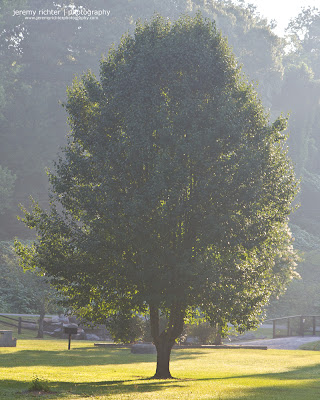The Purple Passion Flower (Passiflora incarnata) is a vine that can grow to as long as twenty feet, and can become an invasive species. In addition to its bizarre-looking petals and sepals, the reproductive organs that arise from the flower give it a rather exotic appearance. The Purple Passion Flower blooms from June to September, and produces edible fruit from July through October.
In addition to its exotic beauty, the Passion Flower has had many uses. The roots can be used to make a tea or treat boils, earaches, and liver problems. The leaves can be cooked with other greens. The fruit can be eaten raw or made into a syrup. But perhaps most interestingly, the plant can be used as a sedative to treat hysteria and other nervous conditions.
UPDATE: Fred Spicer, the Executive Director of the
Birmingham Botanical Gardens,
recently stopped by the blog, and offered some encouragement and
further information, for which I am grateful. Here's what he had to say:
"Enjoyed your photos, very beautiful. However, most ecologists reserve
the word 'invasive' to describe organisms that act to decrease overall
biodiversity in ecosystems other than those they evolved in. So native
organisms, like that Passiflora, cannot be invasive. No doubt, that
plant can be obnoxious, aggressive and unwanted in certain situations,
but it will never be kudzu or Chinese privet or cogon grass, or dozens
of other, truly heinous plants that are ecological and economic
distasters. 'Opportunistic' is the preferred term for native organisms
that can proliferate alarmingly, and, yes, sometimes in
ecologically-altering ways. Nevertheless, that is extremely rare, and
typically comes following human-caused disturbance which upsets
otherwise natural controls on populations. Sorry if this seems pedantic!
You do nice work."
 |
| Purple Passion Flower at Red Mountain Park, Birmingham, Alabama :: Canon Rebel T2i, EF 24-105 f/4 L |
Thanks goes to the United States Department of Agriculture for the information they have made available on their website, regarding the Purple Passion Flower.

















pnW.jpg)


